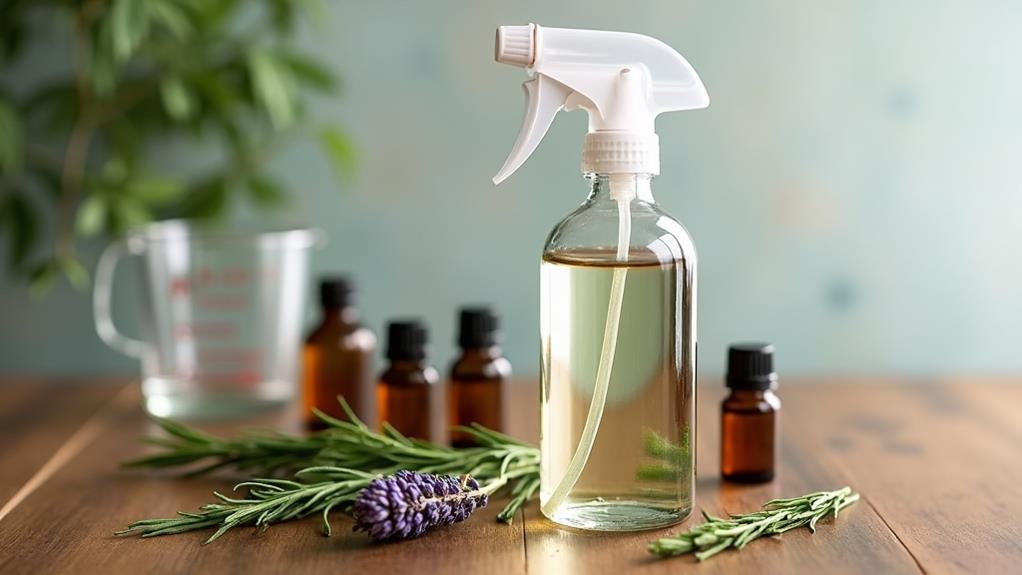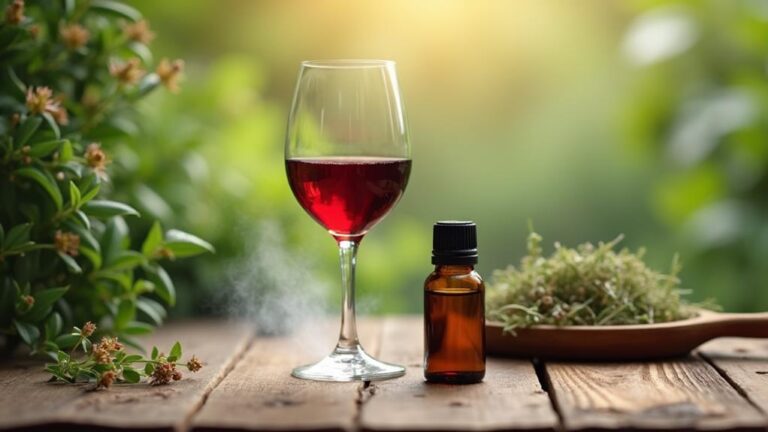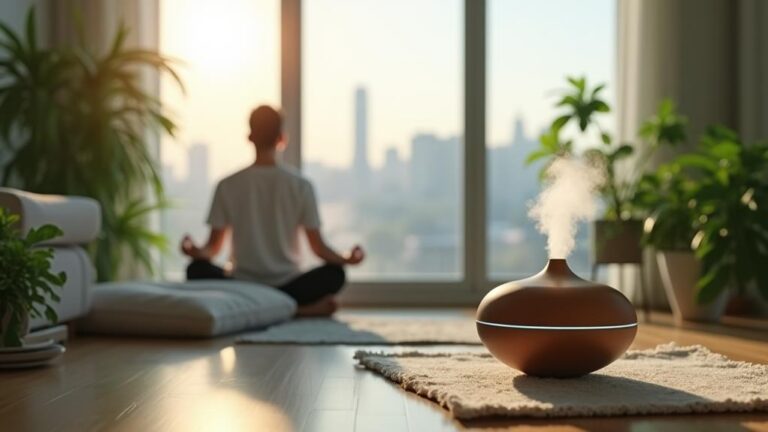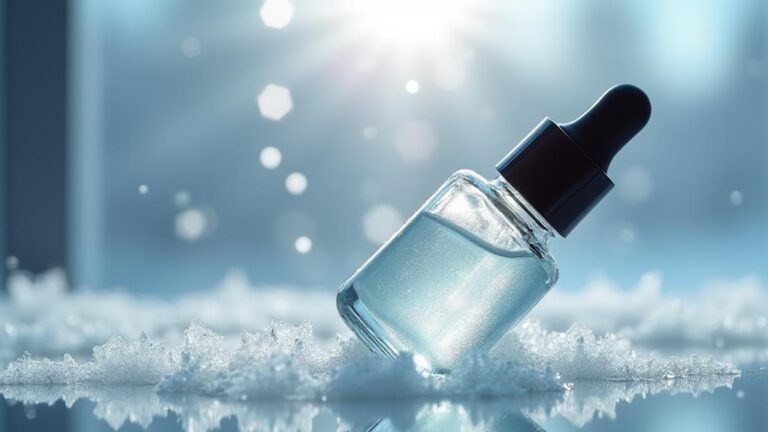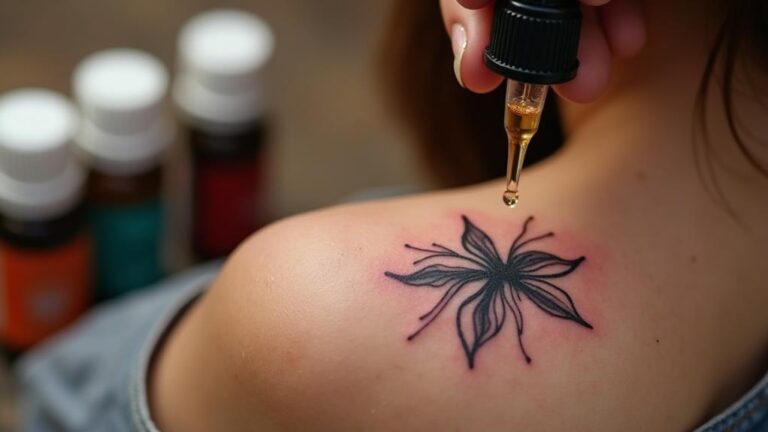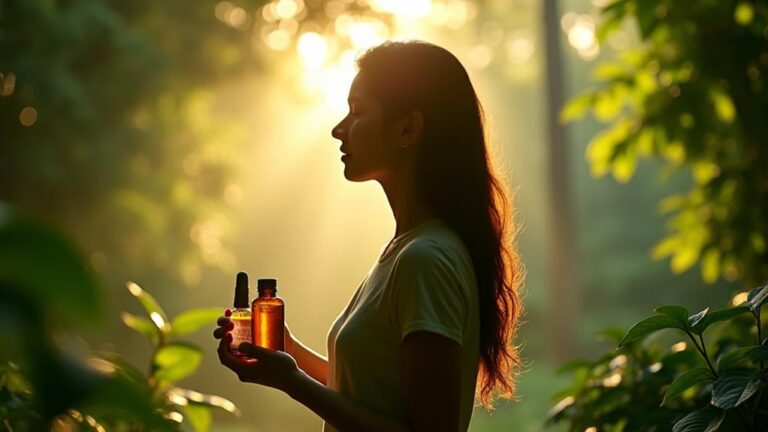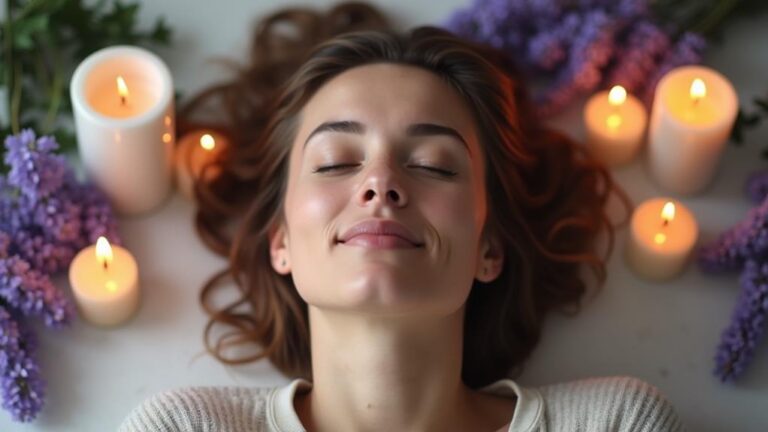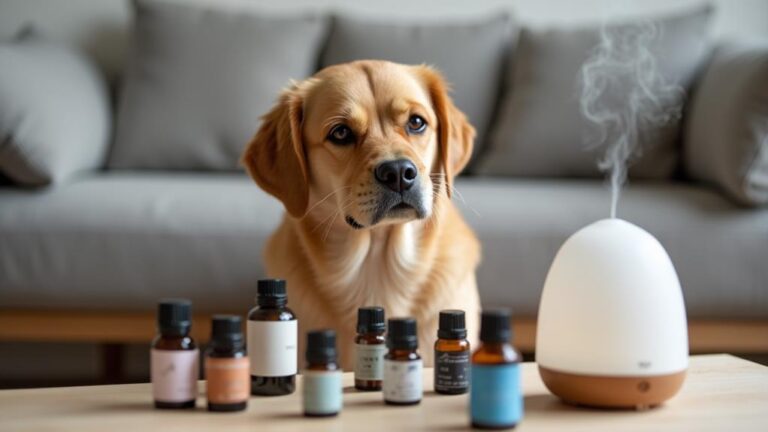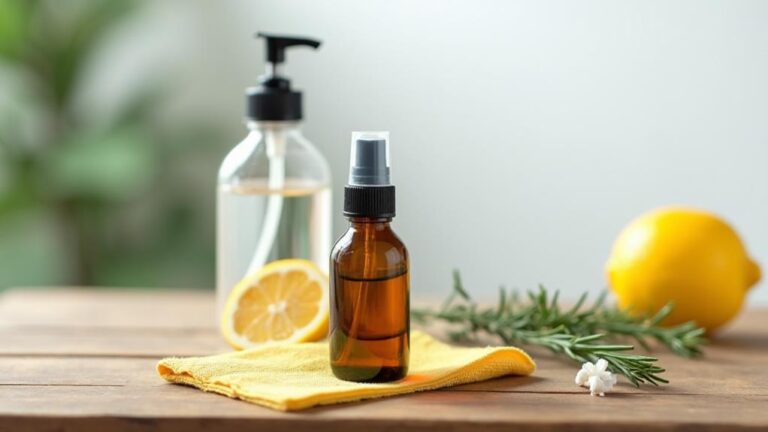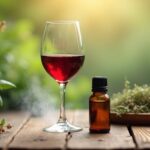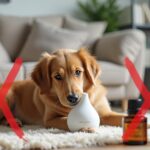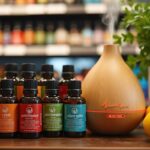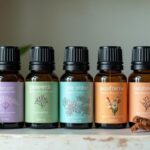As you're decluttering your space, you coincidentally stumble upon an old glass spray bottle that sparks your interest in creating a natural air freshener. You start thinking about essential oils water sprays and their numerous benefits, from uplifting your mood to promoting a restful sleep. You've heard that making one is relatively simple, but you're not quite sure where to start. Fortunately, creating an essential oils water spray can be broken down into just five straightforward steps. By following these steps, you'll be able to create your own unique spray tailored to your needs – but first, let's start with the basics.
Key Takeaways
- Gather necessary ingredients, including filtered or distilled water, organic essential oils, and a clean glass spray bottle.
- Choose essential oils that align with the spray's purpose and consider their benefits and blending techniques.
- Mix the water solution using distilled, filtered, or spring water, and add a pinch of sea salt to distilled water if needed.
- Add essential oils to the water solution, starting with 5-10 drops per 8 ounces, and gently stir the mixture.
- Bottle the spray in a clean, sterile container and label it with a label maker or stickers, including ingredients and warnings.
Gather Essential Ingredients
A few basic ingredients are all you need to create an essential oils water spray.
Start by selecting a high-quality water source.
The quality of the water you use will directly impact the effectiveness of your spray.
Look for filtered or distilled water, as tap water may contain impurities that can affect the performance of your spray.
When sourcing your ingredients, consider the environmental and social impact of your choices.
Opt for organic and locally sourced options whenever possible.
Your spray will be more effective and better for the planet.
For your water spray, you'll need a clean glass spray bottle, a measuring cup, and a spoon or stirrer.
Make sure your bottle is free of any residual chemicals or fragrances that could contaminate your spray.
Choose a bottle that's specifically designed for storing essential oils.
This will guarantee that your spray remains potent and effective.
Choose Your Essential Oils
Selecting the right essential oils for your water spray is crucial, as they directly impact its effectiveness and therapeutic benefits. You'll want to choose oils that align with the purpose of your spray, whether it's to uplift and energize or calm and relax.
Consider the essential oil benefits you're looking for, such as reducing stress, improving sleep, or boosting mood.
When choosing your essential oils, think about blending techniques to create a synergistic effect. Combining oils like lavender and chamomile can enhance their calming properties, while pairing peppermint and eucalyptus can create an invigorating and rejuvenating blend.
You can also consider the top, middle, and base notes of each oil to create a balanced blend. Top notes provide the initial fragrance, middle notes add depth, and base notes provide the lasting scent. By understanding the characteristics of each oil and how they interact with each other, you can create a unique blend that meets your needs and preferences. This thoughtful approach will help you harness the full potential of your essential oils and create a truly effective water spray.
Mix the Water Solution
| Water Type | Purification Method | Mineral Content Effects |
|---|---|---|
| Distilled Water | Removes impurities through boiling | May lack beneficial minerals |
| Filtered Water | Removes impurities through physical barriers | May retain beneficial minerals |
| Spring Water | Naturally purified through earth filtration | Typically retains beneficial minerals |
Choose a water type that suits your preferences, keeping in mind the mineral content effects. If you opt for distilled water, consider adding a pinch of sea salt to reintroduce beneficial minerals. For filtered or spring water, verify the purification process doesn't strip the water of its natural mineral content. Once you've selected your water type, fill a spray bottle with the desired amount. The next step is to add the essential oils, but for now, focus on creating a pure and mineral-rich water solution.
Add the Essential Oils
With your water solution prepared, it's time to introduce the essential oils that will give your spray its unique properties and benefits. This is where you get to customize your spray with your preferred aromatherapy benefits.
Consider the purpose of your spray – do you want to promote relaxation, boost energy, or enhance focus? Choose essential oils that align with your goals.
When adding essential oils, remember that a little goes a long way. Start with a small amount, typically 5-10 drops per 8 ounces of water solution. You can always add more, but it's harder to remove excess oil.
Experiment with different oil blending techniques to create unique scents and synergies. Some popular blending techniques include complementary, contrasting, and accentuating. For example, you can blend lavender and chamomile for a calming effect or combine peppermint and eucalyptus for a revitalizing boost.
As you add the essential oils, gently stir the mixture to guarantee they're fully incorporated into the water solution.
Bottle and Label Spray
Your essential oil water spray is nearly complete, and it's time to give it a home – a clean, sterile bottle that will protect the delicate properties of your solution.
Choose a bottle made from dark-tinted glass or BPA-free plastic that can withstand the essential oils' potency. Consider a bottle with a fine mist spray nozzle, which disperses the solution evenly and prevents clogging.
When selecting a spray nozzle, compare different types to find the one that suits your needs. A trigger spray nozzle is ideal for large areas, while a fine mist nozzle is better suited for small spaces or targeted use.
A pump spray nozzle is also a great option, as it allows for a smooth, consistent spray.
Labeling your essential oil water spray is vital for identifying the solution and its ingredients.
Use a label maker or stickers to create a clear, easy-to-read label. Label design tips include using a simple font, listing the ingredients, and including any necessary warnings or instructions.
Make sure to date the label, so you can track the solution's shelf life.
Frequently Asked Questions
Can I Use Tap Water for the Essential Oil Spray?
You can use tap water, but distilled water is the preference for a pure essential oil spray, as it's mineral-free. If distilled isn't available, a filtered alternative is a good option to minimize impurities.
How Long Do Homemade Essential Oil Sprays Last?
Imagine you create a calming lavender spray for your bedroom. Homemade essential oil sprays typically last 2-6 months, depending on shelf life factors like preservatives and storage conditions, such as light, temperature, and contamination.
Are Essential Oil Sprays Safe for Pets and Children?
When introducing essential oils into your home, consider pet allergy concerns and potential household hazards, especially around children and pets, as some oils can be toxic or irritating, requiring caution and careful use.
Can I Add Food Coloring to My Essential Oil Spray?
You're a million times more creative than you think, but adding food coloring to your mix can be a recipe for disaster – instead, seek colorant alternatives for consistent color results and avoid harsh chemicals.
Do Essential Oil Sprays Expire After Opening?
When you open an essential oil, you're exposing it to air, heat, and light. Proper storage conditions are key to extending shelf life; keep it in a cool, dark place to prevent degradation.
Conclusion
You've done it – you've created a masterpiece that'll transform your space into a rejuvenating oasis and uplift your mood to new heights. With your essential oils water spray, you'll be the ultimate wellness guru, effortlessly calming frazzled nerves and energizing sluggish days. Your home, your workspace, and your loved ones will all thank you for this magical potion that's about to become your new best friend.


